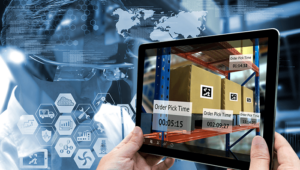 How does one optimize their supply chain? Well, one of the primary solutions to this problem is to use 3PL or 4PL logistic services. However, how does one decide which is best for their business? In essence, 4PL takes over the entire supply chain while 3PL still leaves room for the manufacturer to operate their business from the inside.
How does one optimize their supply chain? Well, one of the primary solutions to this problem is to use 3PL or 4PL logistic services. However, how does one decide which is best for their business? In essence, 4PL takes over the entire supply chain while 3PL still leaves room for the manufacturer to operate their business from the inside.
In this article, we will cover everything you need to know about 3PL vs 4PL so that you can decide which is best for your current business circumstances. Whenever you’re ready to learn more about the difference between 3PL and 4PL logistics, keep reading and get your notes handy.
What Is 4PL?
4PL oversees the management and organization of supply chains as a whole for manufacturers and wholesalers. For instance, with a 4PL model, the producer outsources the packaging, logistics, delivery, and warehousing of the product to a retailer and the 4PL company.
In essence, 4PL takes over the entire logistical operation for companies that manufacture. Some of the services done by a 4PL company are logistics strategy, consultation, freight sourcing, business planning, change of management. As well as analysis of transportation and carrier performance, network analysis, proper inventory, capacity analysis and much more.
Pros & Cons of 4PL
The benefits of 4PL are within the professional and unique functional operational support. The effective outsourcing of logistics alongside a centralized point of contact for all parties involved makes 4PL attractive. By creating a cost-effective supply chain for profit margin and developing a sense of control/ownership over the business, the manufacturer can rest knowing everything is transparent.
However, with 4PL, the company will have little control over the logistics and fulfillment process. This makes the manufacturer disconnected from their product. It’s also cost-prohibitive for some startups and businesses. With 4PL, companies can reduce the inefficacy of their supply chain. They can also ensure they emphasize work on their product instead of the challenges within the supply chain.
What Is 3PL?
3Pl is when the manufacturer maintains control over the supply chain while fully outsourcing the logistics and transportation to the 3PL provider. 3PL is quite similar to 4PL, but still vividly different. For instance, a 3PL company working for a ranch might put together and store the produce. But they might also transport it to the local stores.
Unlike 4PL, the company will not oversee the supply chain organization and management with a bare minimum of insight. 3PL services are IT solutions, cross-docking, inventory storage, customs brokerage. As well as freight forwarding, property management, contract management and packaging of goods. 3PL providers are the mediators between the retail and the manufacturer. Just like 4PL companies, they also have pros and cons.
Pros & Cons of 3PL
First and foremost, 3PL saves money and time while the manufacturer can have control over the returns. It’s great for international and local distributions, and it’s affordable for fast-growing products. Due to high decentralization, it reduces the risk of responsive logistics. Everything is managed without overbearing control on the important aspects of the business.
However, with 3PL, you have will little control over inventory, and it can get quite costly if your orders are low. This model is suitable for small-medium businesses. Mostly due to the limited control over fulfillment and customer experience.
As 3PL firms are the managers between the retailer and manufacturer, the service provider will not take ownership of the goods/products shipped out. If your supply chain is too complicated for you to manage, a 3PL firm can be a great addition to your business.
3PL vs. 4PL: The Differences
The primary difference between 4PL vs. 3PL is that the former manages the entire supply chain. Whereas, the latter is concerned with the management of the logistical process. It’s regularly debated on which of the models is best for a business. In the end, each one will be best for a different situation. Understanding how the two to differ is the first step to understanding which is best for your company.
For example, 4PL is best suited for a larger business, while 3PL is best for small businesses. 4PL shines best at the integration and optimization level. While 3PL is best for daily operations. 4PL owns assets like warehouses, trucks, but 3PL usually does not own such assets. 4PL are effective at managing activities that 3PL providers perform. 4PL results in the best ratio of logistics to value, whereas, 3PL is best suited for one-off circumstances and orders. 4PL ensures to maintain a consistent point of contact for each supply chain in the business.
On the other hand, 3PL businesses only take care of certain aspects of the chain. This is done internally with changing points of contact. Apart from all of these differences, each business model is suited best for a certain set of circumstances. By communicating with your business stakeholders, you will be able to come to a conclusion that is most efficient for all parties involved.
Warehousing & Logistics for You
Now that you know the differences between 3PL vs. 4PL, you are that much closer to finally coming to a conclusion for which is best for your business. In any case, you can always attempt to try both. It’s only natural for you to look for new solutions as your business grows, so you might start with 3PL and then go for 4PL.
If you’re interested in full-scale warehousing and logistics solutions for your business, get in touch with us, and we will happily show you what we can do for you.
